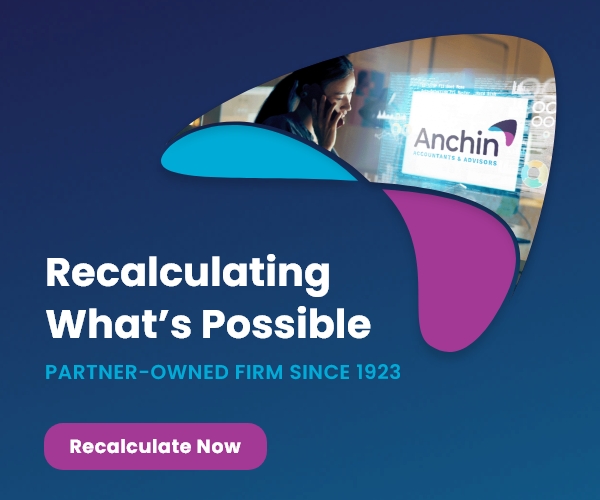People don’t often think of finance leaders as storytellers.
We are the numbers people, the data people. We speak in GL codes and key performance indicators – a language foreign to many of our colleagues. As a result, they know our work is important to the overall success of the business, but they don’t necessarily know how or why.
One of our most important jobs is to tell them, in a language they can understand.
The Language of Stories
For Greg Gens, a fractional CFO with FocusCFO in Northeast Ohio, stories have become his universal method of communication, for their ability to communicate complex topics in an accessible and impactful way across all audiences.
He learned their value years ago, from the CEO of the family manufacturing business. The CEO was looking for ways to streamline efficiency and save on costs, and he wanted to tap the inside knowledge and expertise of the company’s employees. After all, he thought, who better to identify potential ideas than those in the trenches day in and day out – the ones who understood the current processes and likely knew how things could be done better?
The problem was, the employees seemed to think that big ideas were the only ones worth presenting. So, the CEO took a different approach.
He asked his employees, “What would happen if I asked each of you to give me $1 a day?” The employees looked skeptical. It didn’t seem like much, he continued, but over the course of a year, that would add up to tens of thousands of dollars. “The same is true for your ideas,” he said. Even the seemingly small ones can create a substantial impact over the long-term.
The ideas began pouring in. The story had worked.
“Our job is to communicate. We have different stakeholders, all with different objectives, and we need to be able to speak to where they are,” he said. “We have to meet people where they can hear us.”
The Role of Data in Storytelling
What makes a story stronger is data – good, reliable data that instills confidence in the goal and the plan to achieve it, Gens said.
For that, Gens relies on the ITR Economics Trends Report in his work because it conforms to the highest standards and is unmatched in the quality of its data. In conversations with clients, it provides context and instills confidence in decision-making that often falls victim to faulty information.
For instance, say a CEO is worried about the coming year. They report having “heard from clients” that things are going to be bad, and as a result, the CEO is feeling anxious and contemplating actions to prepare the business for the worst. The ITR Economics Trends Report can offer vital perspective, based on forecasts that are 94.7% accurate (based on ITR’s most recent measurements). This external data can become part of a bigger story that focuses on factual information, rather than crowdsourced rumors, and positions the business for better-informed decision making and a stronger likelihood of future success.
Kimberly Clark, consulting managing director with ITR Economics, has seen firsthand how ITR Forecasts can generate confidence in C-level decision-making, particularly when tailored to suit specific audiences. “To create confidence, we have to express the information in a way that makes sense to the person we’re working with,” she said. “Using data allows us to have those irrefutable facts to support what we’re saying, but we have to say it in a way that’s going to translate into something that makes sense to the person we’re talking to.”
When that person is a C-level executive, the story often focuses on “what-why” impact, Clark explained – what it is, why it is, and how to take action from there. For instance, say ITR’s economists predict 18% growth for your industry in 2026, but your company’s leaders are not sure that they have the capacity and resources available to achieve that level of growth, or even more. Taken at first blush, the challenge can seem insurmountable. A strong CFO, however, can take this growth projection along with his detailed operational knowledge of the business to develop a comprehensive plan to accommodate that growth. With a detailed financial roadmap, articulated by the CFO, business leaders can feel confident in their ability to meet these growth goals, and are able to communicate a confident story to the internal and external stakeholders to marshal the needed resources, staffing, and capital. As financial leaders, we often know the business better than anyone else and are uniquely positioned to marry the business strategy with the numbers in a way that enables business leaders to confidently move forward with growing the business.
Leveraging Internal and External Data in Storytelling
Internal and external data points are vital to every business, Gens said. Internal data, such as key performance indicators, establish guardrails for the business – helping leaders understand when they are on track and when they have veered off. External data, such as the kind of information ITR provides, puts company data in the context of the broader economic environment, helping to inform decisions based on larger macroeconomic trends and the variety of market factors at play. The job of financial leaders is to collect and analyze both kinds of data and then leverage that information to craft compelling stories for each specific audience they serve, ensuring they are speaking the right language to reach the right people.
Stories demystify, enlighten, and empower, Gens said, and that makes them indispensable tools for strong financial leaders.
Greg Gens is a Northeast Ohio based Fractional CFO with FocusCFO. FocusCFO works with small & midsized businesses that are often frustrated with how their business is performing, overwhelmed by the challenges of growth, and/or concerned about whether their business will eventually fund their retirement. FocusCFO is a national leader in embedded Fractional CFO services
Kimberly Clark is consulting managing director for ITR Economics. ITR Economics is the oldest privately held, continuously operating economic research and consulting firm in the US. We have provided business leaders with economic information, insight, analysis, and strategy since 1948.























